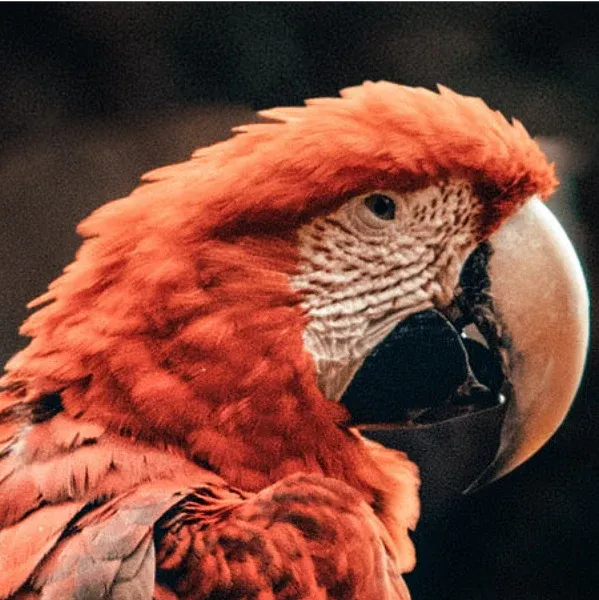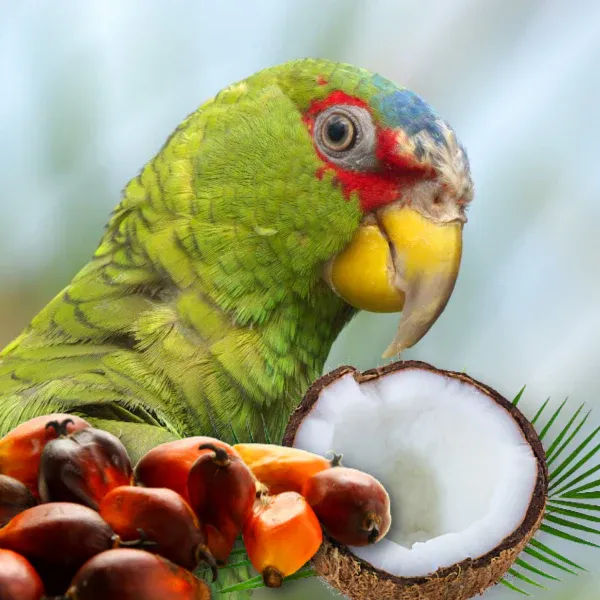Parrot eye problems are a common concern for bird owners, ranging from infections to nutritional deficiencies that can impact your feathered friend’s vision and comfort. Early detection of issues like conjunctivitis, trauma, cataracts, and vitamin A shortages is crucial for maintaining your parrot’s health. In this comprehensive guide, we’ll explore the most prevalent parrot eye problems, their symptoms, underlying causes, and proven treatment strategies to help you keep your bird thriving. For more on overall parrot health care, check out our detailed resources.
Understanding Common Parrot Eye Problems
Parrots, with their curious nature and active lifestyles, are prone to various eye issues that can arise from infections, injuries, or dietary imbalances. Common conditions include bacterial or fungal conjunctivitis (often called pink eye), physical trauma from scratches or collisions, cataracts that cloud the lens, and hypovitaminosis A leading to corneal damage. These problems can escalate quickly due to birds’ sensitive ocular systems, potentially causing discomfort, vision loss, or secondary infections if not addressed promptly.
Veterinarians specializing in avian care emphasize that proactive monitoring during routine check-ups can prevent many parrot eye problems. A balanced diet rich in essential nutrients like vitamin A, combined with a clean living environment, forms the foundation of prevention. According to sources like the Arizona Exotic Animal Hospital, environmental factors such as dust or irritants also play a role, underscoring the need for a safe habitat.
 Bird eye close-up showing potential infection signs
Bird eye close-up showing potential infection signs
Key Symptoms of Parrot Eye Infections
Recognizing symptoms early is vital for effective management of parrot eye problems. Watch for redness around the eyes, discharge from the eyes or nostrils, swollen eyelids, cloudy corneas, squinting, closed eyes, facial swelling, or general listlessness. Additional signs include excessive tearing, rubbing at the eyes, or behavioral changes like reduced activity.
These indicators often signal bacterial, viral, or fungal infections, with conjunctivitis being the most frequent culprit. Prompt veterinary intervention is essential, as self-treatment can worsen the condition. Avian vets recommend avoiding human remedies, as bird physiology differs significantly—always seek professional diagnosis through exams or swabs for accurate treatment.
Conjunctivitis in Parrots: Causes and Recovery
Conjunctivitis tops the list of parrot eye problems, manifesting as inflamed, red eyes with discharge due to bacteria, fungi, or viruses. While mild cases might resolve naturally, most require veterinary care to prevent complications like corneal ulcers or blindness. Untreated infections can spread bilaterally, affecting both eyes and overall health.
Treatment typically involves species-specific antibiotics or antifungals via eye drops, oral medications, or injections, prescribed after a thorough exam. Supportive care includes isolating the bird, maintaining hygiene, and monitoring progress. Studies from PetMD highlight that quick action improves recovery rates significantly.
Cleanliness is paramount: Regularly disinfect cages, perches, and toys to curb reinfection risks. For related bird health tips, including budgie medicine for cold, which shares similar preventive strategies.
 Parrot eye infections illustration
Parrot eye infections illustration
Eye Trauma and Injuries in Parrots
Active parrots often sustain eye trauma from crashes into cage bars, sharp toys, or self-inflicted scratches during itching. Symptoms include bleeding, swelling, pain-induced squinting, or lethargy. Minor cases may involve surface scratches, while severe ones risk deeper damage.
Immediate first aid entails gently flushing the eye with sterile saline using a soft cloth—never rub or use tap water. However, this is temporary; rush to an avian vet for assessment, which may include anti-inflammatory drops or antibiotics. Prevention involves inspecting enclosures for hazards, providing soft perches, and supervised playtime.
Cataracts in Parrots: Development and Management
Cataracts, opaque lens areas impairing vision, affect parrots due to genetics (e.g., in some Amazon species), aging, trauma, malnutrition, or retinal disease, as noted in Safatle (2009)’s ophthalmology research on pet birds. Symptoms feature cloudy eyes and navigation difficulties, though parrots adapt remarkably well in familiar settings, often negating euthanasia.
Surgical options like phacoemulsification exist but are tricky for small-eyed species. Management focuses on underlying causes, environmental stability, and nutrition. Regular vet evaluations ensure optimal quality of life, with many birds thriving despite partial vision loss.
Vitamin A and E Deficiency: A Major Contributor to Parrot Eye Problems
Hypovitaminosis A weakens eye membranes, causing dryness, ulcers, conjunctivitis, and night blindness—common in seed-heavy diets lacking variety. Vitamin E deficiency compounds this by failing to protect ocular cells from oxidative stress. Symptoms mirror infections but stem from nutrition.
Counter this with vitamin A-rich foods: carrots, sweet potatoes, kale, spinach, and red palm oil. Vitamin E sources include almonds and wheat germ. Transition picky eaters gradually, mimicking wild foraging behaviors. Consult avian nutritionists for tailored plans.
 Healthy fats sources beneficial for parrot eye health
Healthy fats sources beneficial for parrot eye health
| Hot Tip: | As the primary caregiver, guide your parrot toward balanced eating—like wild parents teach fledglings. Introduce pellets and veggies patiently for long-term eye health. |
|—|
Preventing Parrot Eye Problems
Prevention is the best defense against parrot eye problems. Key strategies include:
- Daily Cage Cleaning: Remove droppings and disinfect to eliminate bacteria.
- Nutrient-Dense Diet: Prioritize vitamin A/E foods alongside pellets.
- Fresh Water Routine: Change bowls daily to avoid bacterial growth.
- Irritant Avoidance: Ban smoke, aerosols, and drafts.
- Vet Check-Ups: Annual exams catch issues early.
- Daily Inspections: Monitor eyes for subtle changes.
These habits, backed by avian experts, drastically reduce risks.
What to Do If Your Parrot Shows Eye Infection Symptoms
Act swiftly with these steps for suspected parrot eye problems:
Isolate Immediately
Quarantine in a calm area to halt spread.
Hospital Cage Setup
Use a warm, ventilated space with soft furnishings.
Gentle Cleaning
Wipe with saline-dampened cloth; no soaps.
Vet Consultation
Seek avian specialist care without delay.
Adhere to Treatment
Complete all meds and follow-ups.
In summary, parrot eye problems like infections, trauma, cataracts, and deficiencies are manageable with vigilance, nutrition, and vet support. Prioritize a clean habitat, varied diet, and routine exams to safeguard your bird’s sight. Consult professionals for personalized advice, and explore more pet bird care tips on our site for healthier, happier companions.
References
- Arizona Exotic Animal Hospital. Eye swelling in birds. http://www.azeah.com/birds-cockatiels-cockatoos-macaws-parakeets/eye-swelling-birds
- Burkett, G. Avian First Aid: Be Your Bird’s First Responder! DVD.
- Dennis, C. (2023). Bird eye problems: Signs, causes, treatments. Chewy.
- Hawcroft, T. First Aid for Birds. Howell Book House, 1994.
- Hockaday, J. (2024). Conjunctivitis in birds. PetMD. https://www.petmd.com/bird/conditions/eyes/conjunctivitis-birds
- Safatle, A. M. V. (2009). Ophthalmology in pet birds. World Small Animal Veterinary Association Congress.
